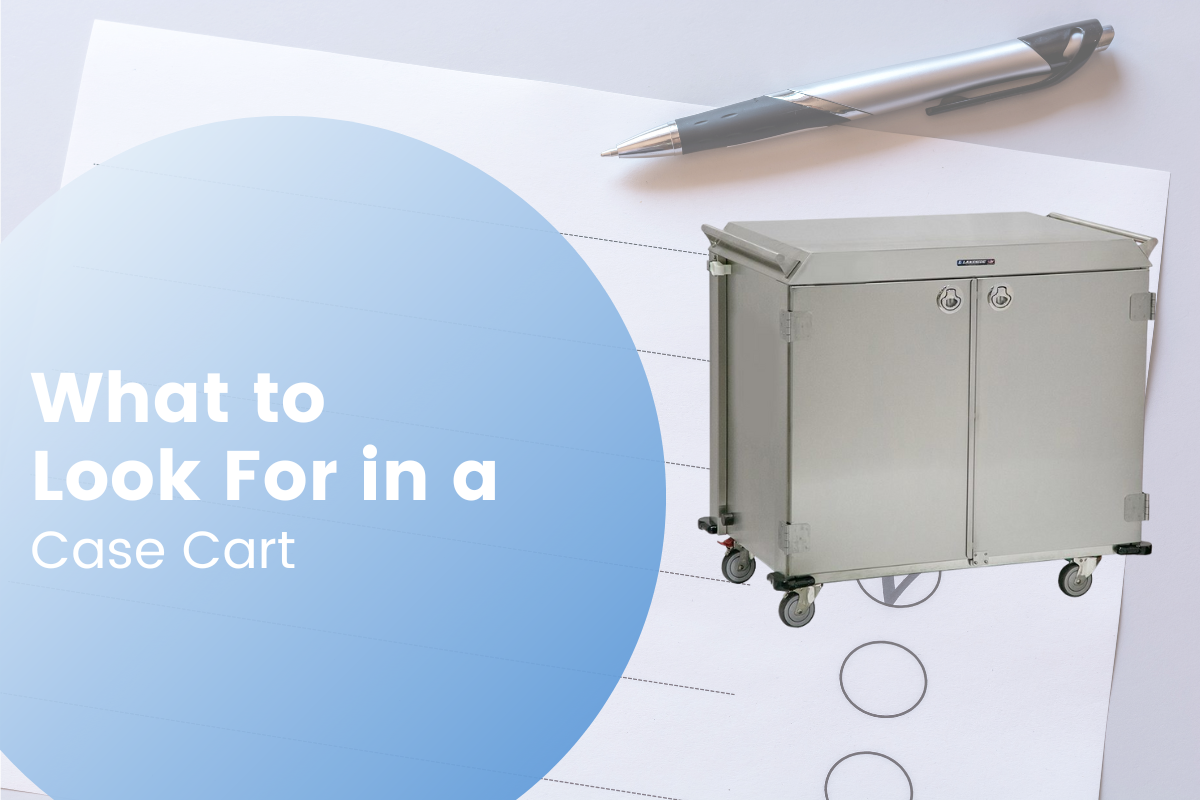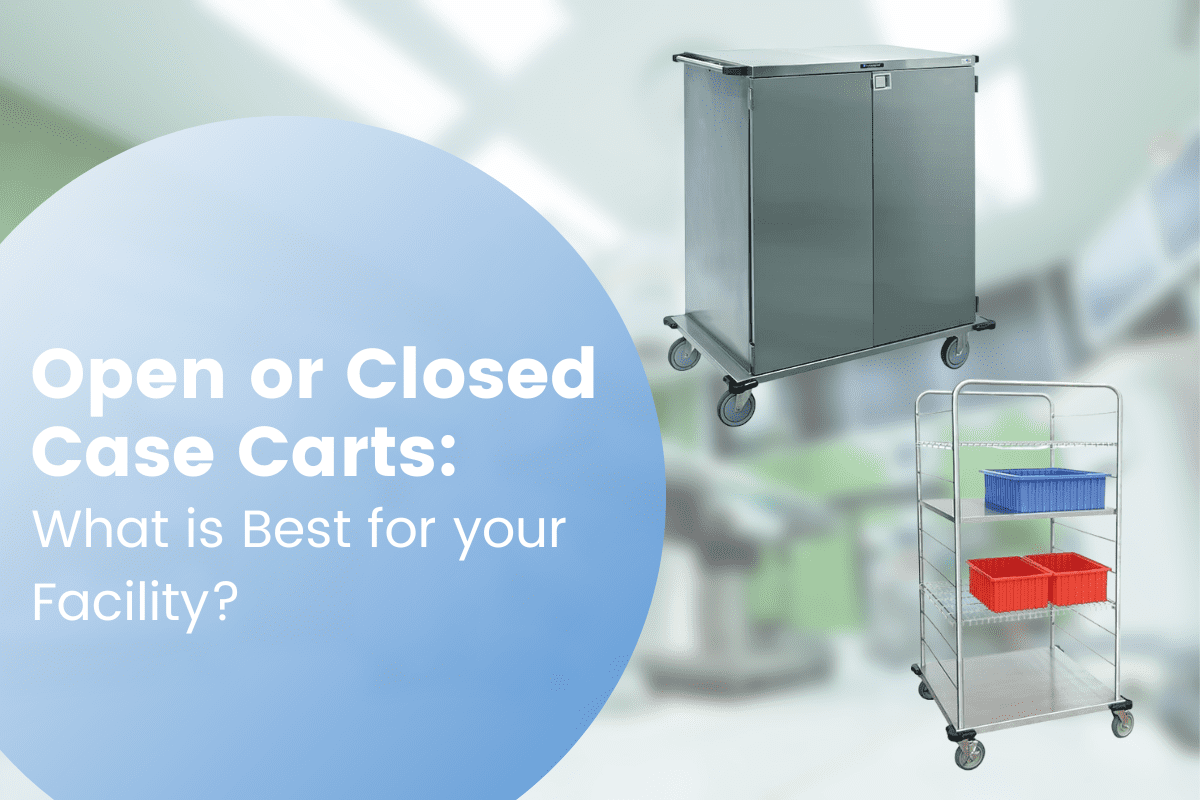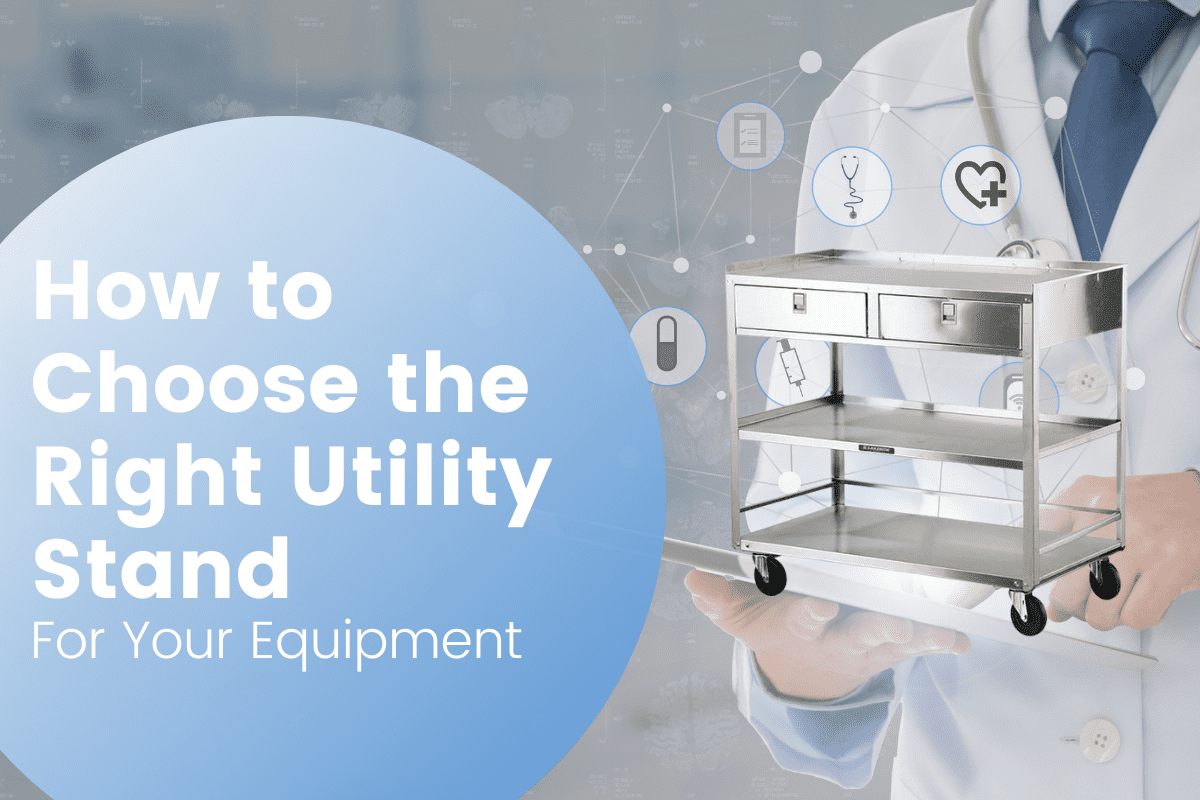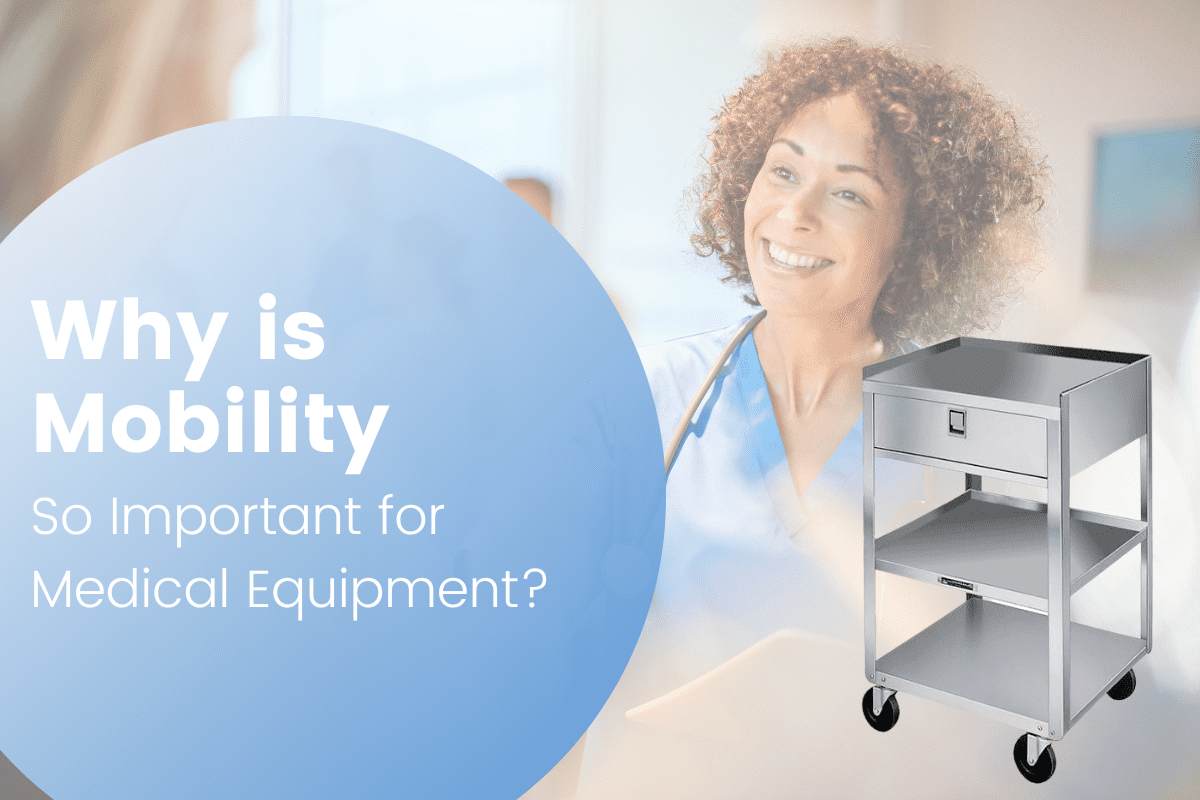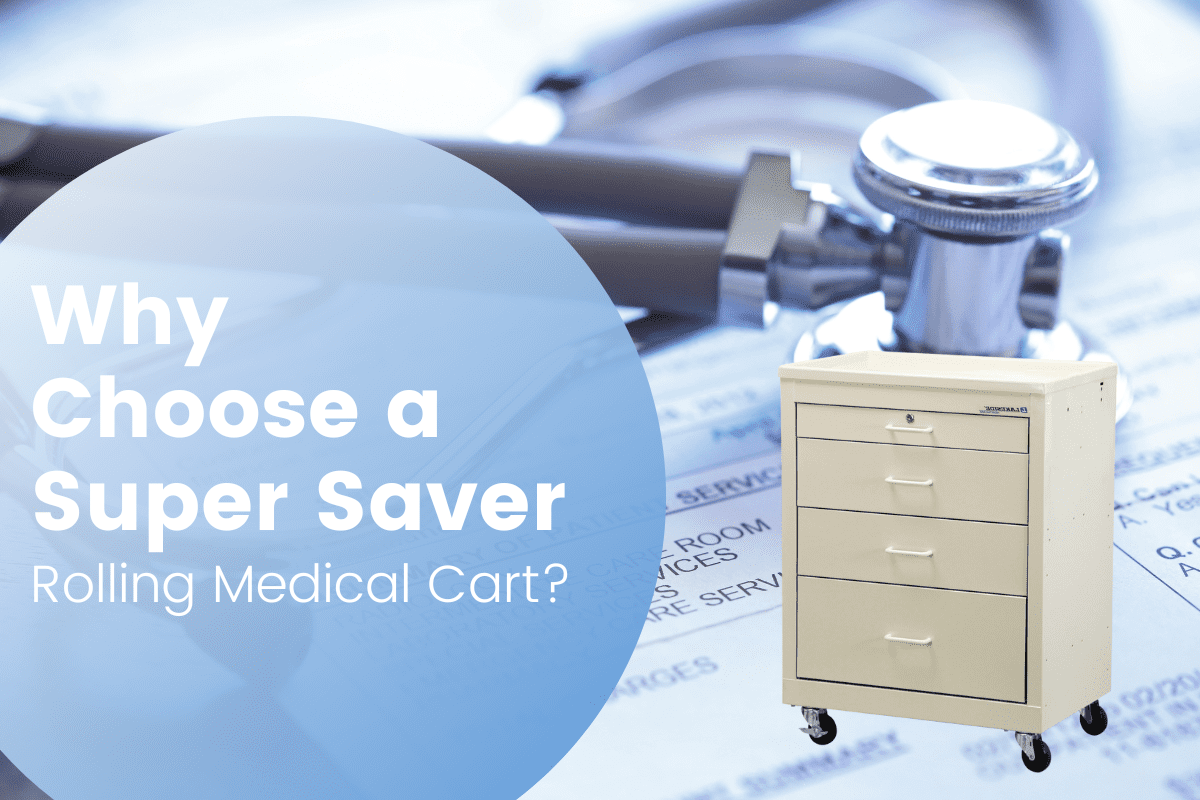
Case carts are a very important piece of equipment for hospitals and healthcare facilities with ORs. They are the best way to transport sterile surgical equipment to the OR for procedures without risking contamination to nearby staff or patients. Because of this, hospitals rely on surgical carts every day in order to treat patients efficiently and effectively. While no two healthcare facilities are the same, why should they have to use the same equipment?
Medical carts can be standardized, but at Lakeside, we offer tons of modifiable features and can even fully customize case carts to fit perfectly in your facility. Although most surgical case carts on the market have their similarities, not all are high quality and packed full with great features.
It is also vital to understand that case carts are usually offered in two styles: Open or Closed. What’s the difference you ask? Open case carts don’t have locking doors and are designed with easy access to surgical instruments and supplies in mind. Whereas closed case carts are designed with locking doors to achieve maximum protection of contents that lay inside. In this blog, we’ll highlight the key essentials that could elevate you and your OR’s case carts!
Are you missing essential elements in your case carts?
The first differentiator in the quality of surgical case carts is the material that is used to make it. Ideally, medical case carts should be made of all-welded stainless steel construction. Stainless steel is the material of choice for case carts because it makes them stronger, easier to clean and sanitize, and more resistant to corrosion and stains than any other common materials used in case carts. However, you may want to consider a few things when selecting the appropriate case cart or add-ons for the specific needs of your OR. This includes storage and staging, case picking, transport, and system ownership.
Some great elements of Lakeside case carts and their benefits include:
Hold Open Latch
This latch that is integrated into the case carts holds the door open to allow for easier cleaning and restocking of supplies. Having a door keep closing while you’re trying to sanitize or stock a cart can be extremely frustrating, which is why Lakeside includes this simple latch to reduce unnecessary headaches for your staff.
Extended Push Handle
Case carts are intended to be mobile pieces of equipment, but without a solid handle it can be very difficult to maneuver them around a hospital. Lakeside’s surgical case carts have an integrated extended push handle to ensure that they are easy to move around to different ORs in a facility.
Sealed Doors
The doors on Lakeside’s medical carts seal completely shut in order to safeguard the contents against cross-contamination from outside factors.
Positive Door Latches
In addition to the hold open latch, Lakeside’s surgical case carts also feature positive door latches which secure the doors in the shut position to keep the contents safe and sterile during transport and storage.
Innovative Floor Drain
Case carts are bound to collect some water during the cleaning process which is why Lakeside includes an innovative floor drain that directs water to the drain area. This simplifies the cleaning process by making sure you don’t have to spend extra time drying everything by hand.
Bumpers
Every well-made surgical case cart should include a bumper in order to protect the walls and furniture around it. Lakeside’s non-marking bumpers work to perfection by protecting everything around the cart and adding some peace of mind that you won’t ruin any walls while transporting the cart.
Casters
Medical carts are meant to be mobile, but they’re only as mobile as their casters allow. Lakeside uses maintenance-free stainless steel casters that are sturdy and durable allowing you to transport the supplies wherever they need to go with ease. Two of the casters have brake systems to make sure the surgical case carts stay in place during their use.
Pull-Out Shelves
All case carts have shelves, but Lakeside’s feature pull out shelves equipped with a locking mechanism to make retrieval and stocking of the contents super easy. Additionally, there are three different shelving options available for all surgical carts: wire racks, solid stainless shelves, and perforated stainless shelves, which all have various benefits. We understand medical case carts are an essential piece of equipment for any hospital. To find what type of shelf may be perfect for you and your operating room check out our past blog, “Shelving options: What’s Best When It Comes to Case Carts?” From there, we dissect multiple options including the ones listed above, breaking down the strengths and best fit of each shelf.
Accessories
In addition to all of these essential features, there are also many optional choices and features for the surgical carts to make them the perfect fit for any hospital. There are lots of cart sizes to choose from ranging from 39” to 64” tall, with 1 or 2-door options available. One optional accessory is a dirty/clean indicator system to reduce confusion and make sure that all staff are on the same page. This system is super simple to use, but makes sure that you don’t waste time cleaning a cart that has already been sterilized.
Another option that can be useful in large hospitals and healthcare facilities is the towing package. This includes an electric power tug which can be used to transport multiple stocked case carts at the same time without causing your staff to exert unnecessary energy. This also comes with heavy-duty towing casters and hitches that are very durable and make the system easy to use. This saves effort for your staff and allows them to focus on the patient rather than using all of their energy just to get the supplies where they are needed.
Other optional accessories include extra shelves to allow for additional supplies and simple stocking. Another option is a document holder to maintain organization throughout your facility. All accessories are able to be added with limited or no tools in the field, or at the facility before they are shipped for your convenience.
Case carts are a crucial part of many hospital operations, so why not invest in well-made, durable case carts that are designed just for your facility. Lakeside understands that your facility has different needs than others, which is why we’ll work with you to customize the perfect case carts for your hospital. Get in touch with us and together, we will find the perfect case cart design for your hospital!




